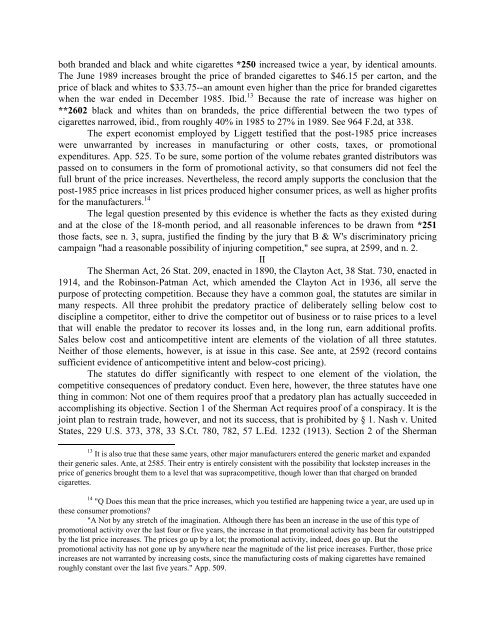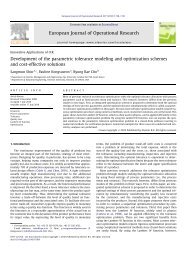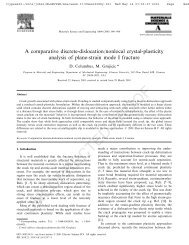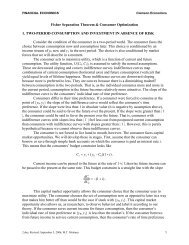509 U.S. 209, 113 S.Ct. 2578 BROOKE GROUP LTD., Petitioner v ...
509 U.S. 209, 113 S.Ct. 2578 BROOKE GROUP LTD., Petitioner v ...
509 U.S. 209, 113 S.Ct. 2578 BROOKE GROUP LTD., Petitioner v ...
You also want an ePaper? Increase the reach of your titles
YUMPU automatically turns print PDFs into web optimized ePapers that Google loves.
oth branded and black and white cigarettes *250 increased twice a year, by identical amounts.<br />
The June 1989 increases brought the price of branded cigarettes to $46.15 per carton, and the<br />
price of black and whites to $33.75--an amount even higher than the price for branded cigarettes<br />
when the war ended in December 1985. Ibid. 13 Because the rate of increase was higher on<br />
**2602 black and whites than on brandeds, the price differential between the two types of<br />
cigarettes narrowed, ibid., from roughly 40% in 1985 to 27% in 1989. See 964 F.2d, at 338.<br />
The expert economist employed by Liggett testified that the post-1985 price increases<br />
were unwarranted by increases in manufacturing or other costs, taxes, or promotional<br />
expenditures. App. 525. To be sure, some portion of the volume rebates granted distributors was<br />
passed on to consumers in the form of promotional activity, so that consumers did not feel the<br />
full brunt of the price increases. Nevertheless, the record amply supports the conclusion that the<br />
post-1985 price increases in list prices produced higher consumer prices, as well as higher profits<br />
for the manufacturers. 14<br />
The legal question presented by this evidence is whether the facts as they existed during<br />
and at the close of the 18-month period, and all reasonable inferences to be drawn from *251<br />
those facts, see n. 3, supra, justified the finding by the jury that B & W's discriminatory pricing<br />
campaign "had a reasonable possibility of injuring competition," see supra, at 2599, and n. 2.<br />
II<br />
The Sherman Act, 26 Stat. <strong>209</strong>, enacted in 1890, the Clayton Act, 38 Stat. 730, enacted in<br />
1914, and the Robinson-Patman Act, which amended the Clayton Act in 1936, all serve the<br />
purpose of protecting competition. Because they have a common goal, the statutes are similar in<br />
many respects. All three prohibit the predatory practice of deliberately selling below cost to<br />
discipline a competitor, either to drive the competitor out of business or to raise prices to a level<br />
that will enable the predator to recover its losses and, in the long run, earn additional profits.<br />
Sales below cost and anticompetitive intent are elements of the violation of all three statutes.<br />
Neither of those elements, however, is at issue in this case. See ante, at 2592 (record contains<br />
sufficient evidence of anticompetitive intent and below-cost pricing).<br />
The statutes do differ significantly with respect to one element of the violation, the<br />
competitive consequences of predatory conduct. Even here, however, the three statutes have one<br />
thing in common: Not one of them requires proof that a predatory plan has actually succeeded in<br />
accomplishing its objective. Section 1 of the Sherman Act requires proof of a conspiracy. It is the<br />
joint plan to restrain trade, however, and not its success, that is prohibited by § 1. Nash v. United<br />
States, 229 U.S. 373, 378, 33 S.<strong>Ct</strong>. 780, 782, 57 L.Ed. 1232 (1913). Section 2 of the Sherman<br />
13 It is also true that these same years, other major manufacturers entered the generic market and expanded<br />
their generic sales. Ante, at 2585. Their entry is entirely consistent with the possibility that lockstep increases in the<br />
price of generics brought them to a level that was supracompetitive, though lower than that charged on branded<br />
cigarettes.<br />
14<br />
"Q Does this mean that the price increases, which you testified are happening twice a year, are used up in<br />
these consumer promotions?<br />
"A Not by any stretch of the imagination. Although there has been an increase in the use of this type of<br />
promotional activity over the last four or five years, the increase in that promotional activity has been far outstripped<br />
by the list price increases. The prices go up by a lot; the promotional activity, indeed, does go up. But the<br />
promotional activity has not gone up by anywhere near the magnitude of the list price increases. Further, those price<br />
increases are not warranted by increasing costs, since the manufacturing costs of making cigarettes have remained<br />
roughly constant over the last five years." App. <strong>509</strong>.
















